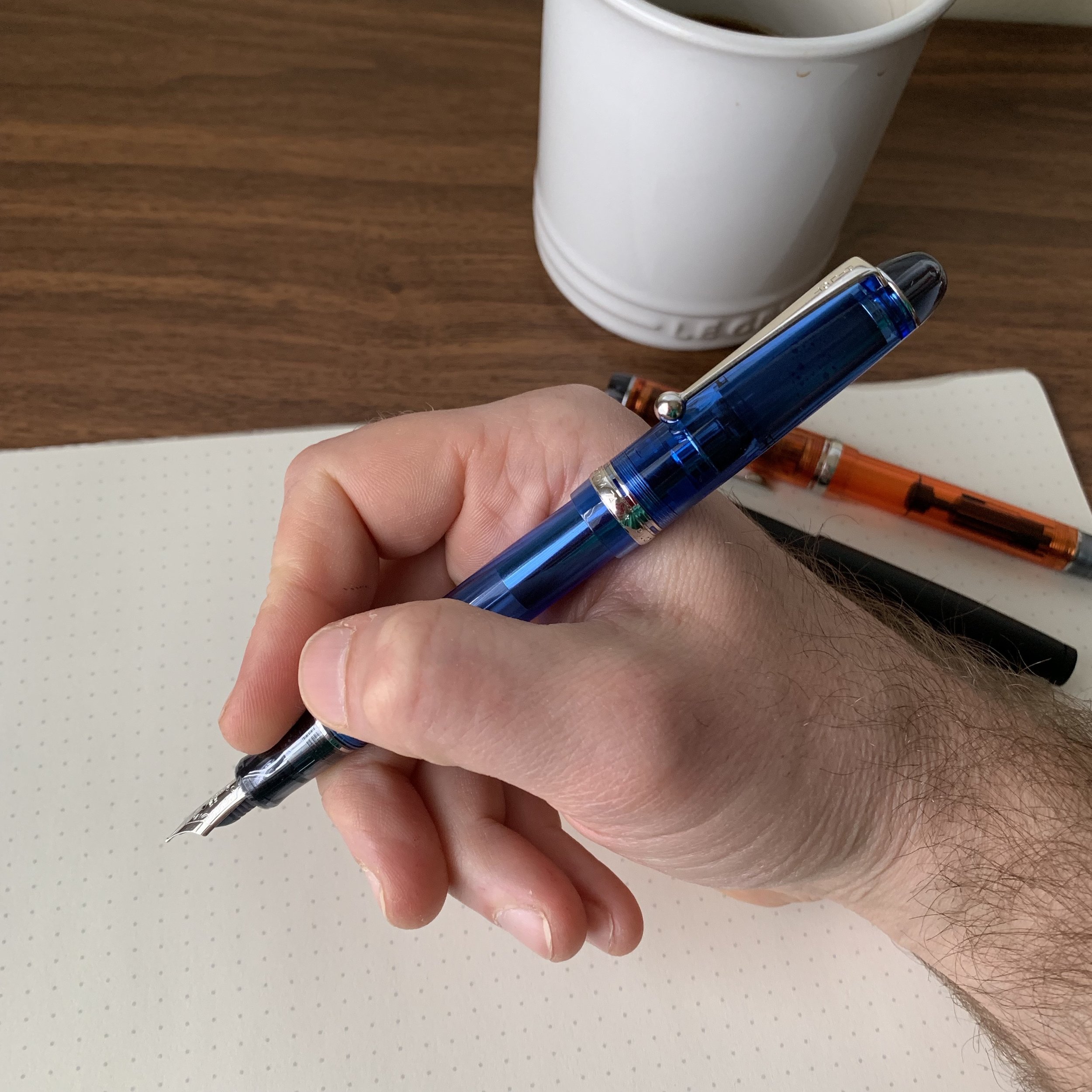The current fountain pen market can be driven to a large degree by hype, with new or “limited edition” pens selling quickly, only to have sales peter out as the novelty wears off and users figure out that maybe those “next big thing” pens aren’t the best for actual daily use. I’ve been as guilty of this as anyone, as some of what I consider to be the best fountain pens in my collection have unfortunately fallen by the wayside. Today I’ll take a look at three pens that have been around for a while, but don’t necessarily get a lot of attention on pen blogs and websites and social media. That’s unfortunate because all three are exceptional, well-balanced writing instruments that are generally reliable “out of the box” and available at most pen retailers. I’m talking about the Pilot Custom 74, the Pilot Custom Heritage 92, and, yes, the Lamy 2000.
You can read my full write-up on the Pilot Custom 74 here.
Pilot Custom 74. At the top of my list of pens that deserve more attention is the Pilot Custom 74. We did end up selling a handful of these pens in Baltimore, and these colorful demonstrators are what I consider to be one of the better bargains on the market. For $176, which is rapidly becoming the price point for many steel-nib pens, you get a sweet 14k Pilot rhodium-plated nib, paired with Pilot’s high-capacity pump converter, the CON-70. You can also use Pilot’s cartridges if you prefer the convenience, and they hold a ton of ink and last forever. The rhodium trim on this pen nicely complements the jewel-like acrylics. I own the blue version, and Violet, Orange, Smoke, and Clear versions are also available, along with two limited editions arriving in the coming months. Stay tuned!
I’ve previously written a full review of the Custom Heritage, but the orange acrylic version has become somewhat more difficult to find, even online.
Pilot Custom Heritage 92. Sitting at a slightly higher price point than the Custom 74 is the Custom Heritage 92, which runs $220 and pairs the same 14k nib from the Custom 74 with an integrated piston filler. One of the main reasons that I love Pilot pens is the mix of quality and price - with the exception of the Lamy 2000 (discussed below), it’s rare that you will find a quality piston-filling fountain pen with a gold nib for under $300. The main drawback to the Custom Heritage is the fact that it’s only available in a single color. At one point Pilot made this pen for the Japanese market in orange, blue, and smoke as well, with the different colors being readily available online, but those appear to be phased out and are not as readily available as they once were. I recently saw someone trying to sell the orange version for close to $1,000, which is silly.
Most people won’t notice that the Lamy 2000 fountain pen isn’t a ballpoint or a rollerball.
Lamy 2000. And finally, we get to an old standby that rarely sits uninked and out of my rotation for long. Talk about a pen that’s not “sexy” in the traditional sense: the minimalist, somewhat brutal, fiberglass design of this pen hasn’t changed at all since the 1960s, and it certainly isn’t going to win you any “likes” (or generate much blog traffic, for that matter), but if I were to open a pen store, you can bet that I’d stock these in all available nib sizes and try to push them on everyone who walked through the door looking for a durable, bottle-filling daily writer. Especially for an office professional, the Lamy 2000 gives you an understated, reliable pen with a large ink capacity that can get you through long meetings, hearings, depositions, or whatever your need may be. It’s first on my list of “workhorse pens.”
So what prompted this post? At last week’s Baltimore Pen Show, a handful of people came by the Vanness Pens table and described to me what they were looking for. In a few instances, the Pilots would have made a perfect match but didn’t get any consideration at all. I sensed a real hesitation to give these pens a chance, whether because they were slightly more expensive than steel-nib options that customers ended up purchasing, or simply because some people hadn’t heard of these pens before or hadn’t seen them online. Don’t get me wrong - if a pen doesn’t speak to you, then don’t spend your money on it. But one of my resolutions for this year was to shift the focus of the blog from merely following market trends back to highlighting those products that I love and believe will serve readers well over the long term. Sometimes the best option isn’t the newer, shinier release - it’s the old standard that’s been around for many years, for good reason, and you owe it to yourself as a user and enthusiast to give these pens a chance.
Six “Workhorse Pens”, from left: Pilot Custom 74, Pilot Custom Heritage 92, Lamy 2000, Montblanc 146 Ultra Black, Lamy Safari, and Faber-Castell e-Motion Pure Black.
Disclaimer: As of 2020, T.G.S. is supported by purchases from the T.G.S. Curated Shop and pledges via the T.G.S. Patreon Program.




